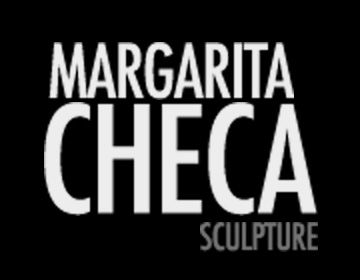Carol Damian Art Critic 2000
THE ESSENCE Of THE HUMAN PRESENCE LS Captured in Margarita Checa’s melancholy and sensuously provocative sculptures. Haunted by psychological and emotional undertones that are communicated through the decidedly physical and organic nature of wood or richly worked surfaces captured in brome, her figures have a unique and expressive power. Reminiscent of indigenous peoples and ancient traditions of body preservation through mummification, death masks and wrapping, they function at a variety of levels as she explores aspects of seduction, alienation, isolation, and the cycles of life through their forms. Her Peruvian heritage and familiarity with the extraordinary Pre‑Columbian artifacts of the death rituals of such desert cultures as Paracas and Chan Chan, among the many remarkable legacies of the Andean past, certainly contribute to the expressive power of her work. Referents to the primitive peoples of the Amazon forests and their outstanding aesthetic skills andrelationship with nature are also present. The impending loss of the forests and its many innocent souls inspire many of her images.
The use of wood and concerns with anthropological motifs may be seen as a way to probe beneath the layered surfaces of an increasingly complex society and art world through visual imagery that is as potent as it is lost and lonely. Especially in the works conceived in the beauty of wood, the figures of Margarita Checa are elevated to a new realm of aesthetic appreciation and, at the same time, determine a distinctive and poetic environment. Although seemingly abandoned and isolated, each object, figure or head occupies a space of a different nature than that of everyday life that puts the spectator within its territory and creates a realm of personal involvement and social consciousness. She leads the viewer from slow recognition of the familiar to an enhanced realization of the significant of life.
Each of Margarita Checa’s sculptural images acquires their own individuality and character as the artist loads them with the intimacy and extraordinary skill of her personal craftsmanship and soul‑searching conception. They become physical statements about the human form and its potential as a vehicle of meaningful investigation into such ideas as femininity, confinement, endurance, repression and death, while encouraging individual reflection from the viewer into the very soul of her characters and their worldly predicament.
There is a fascinating interplay that takes place in her sculptures between images that make reference to lost civilizations and tribal traditions and those that are emphatically modem in their formation. The distortion of the physical and oven articulation of mood and mental disposition is especially modem, as is her distinctive approach to the media, which carries the materiality of the substance of wood and texture of brome to new heights of technique and imagination. Committed to the process of reinventing the art of sculpture with sensitivity and dedication, Margarita Checa has created works that invite serious contemplation and a strange empathy.
‑Carol Damian Florida International University Miami, February 2000
Back